Abstract
Despite frequent reference to the Health Belief Model (HBM), few studies address the internal consistency (within questionnaires) or the stability across populations of scales used to measure HBM variables. As part of a 1983 Michigan statewide blood pressure survey, trained interviewers administered 32 health belief questionnaire items to 2,802 randomly selected adult Michigan residents. Exploratory common factor analysis was used to examine the structure of these questionnaire items. Six correlated factors, which corresponded closely with theoretical constructs, appeared. Guided by these results, we developed a confirmatory common factor model. The model's fit was examined in random population halves and in univariate sex, race, and age subgroups. Except perhaps in the oldest age group, the model's fit appeared constant. Reliabilities estimated for HBM factor scales formed with these questionnaire items appeared independent of age, race, or sex.
Full text
PDF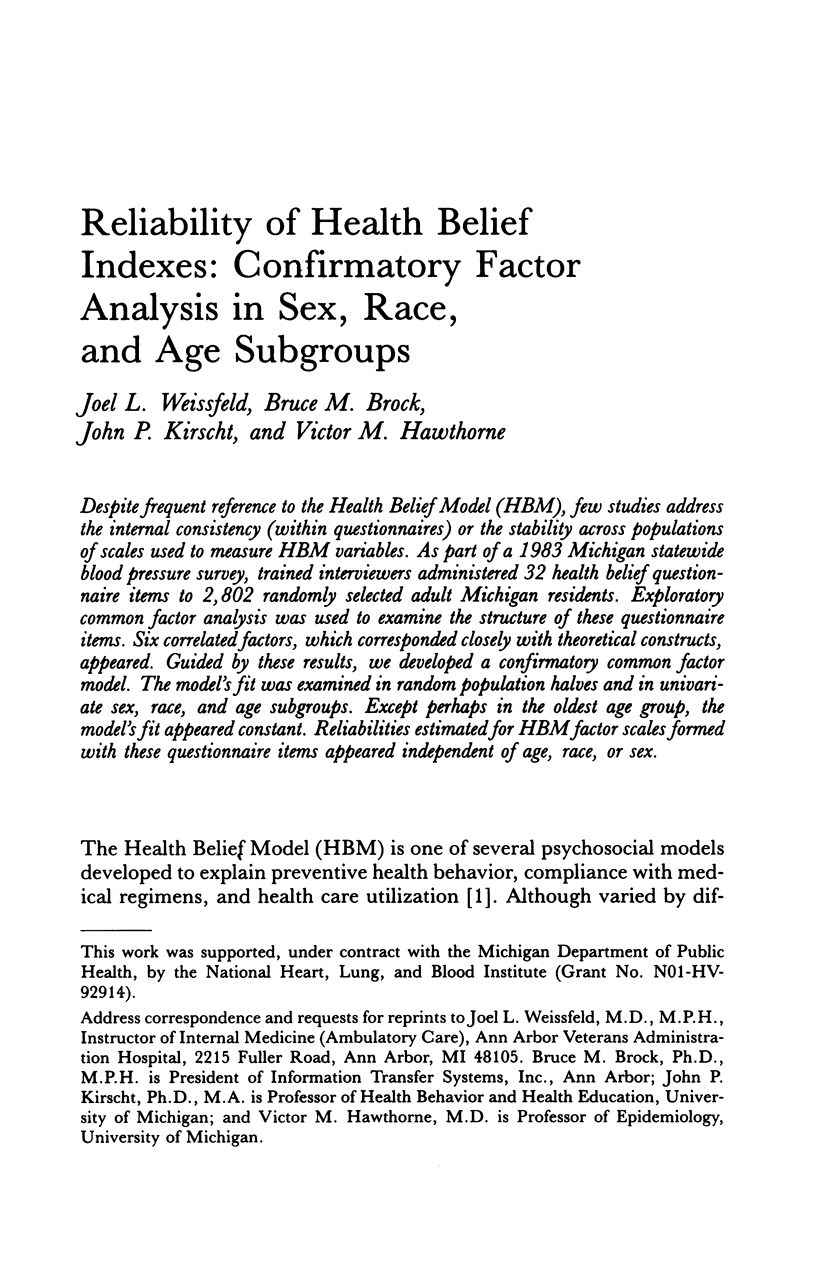
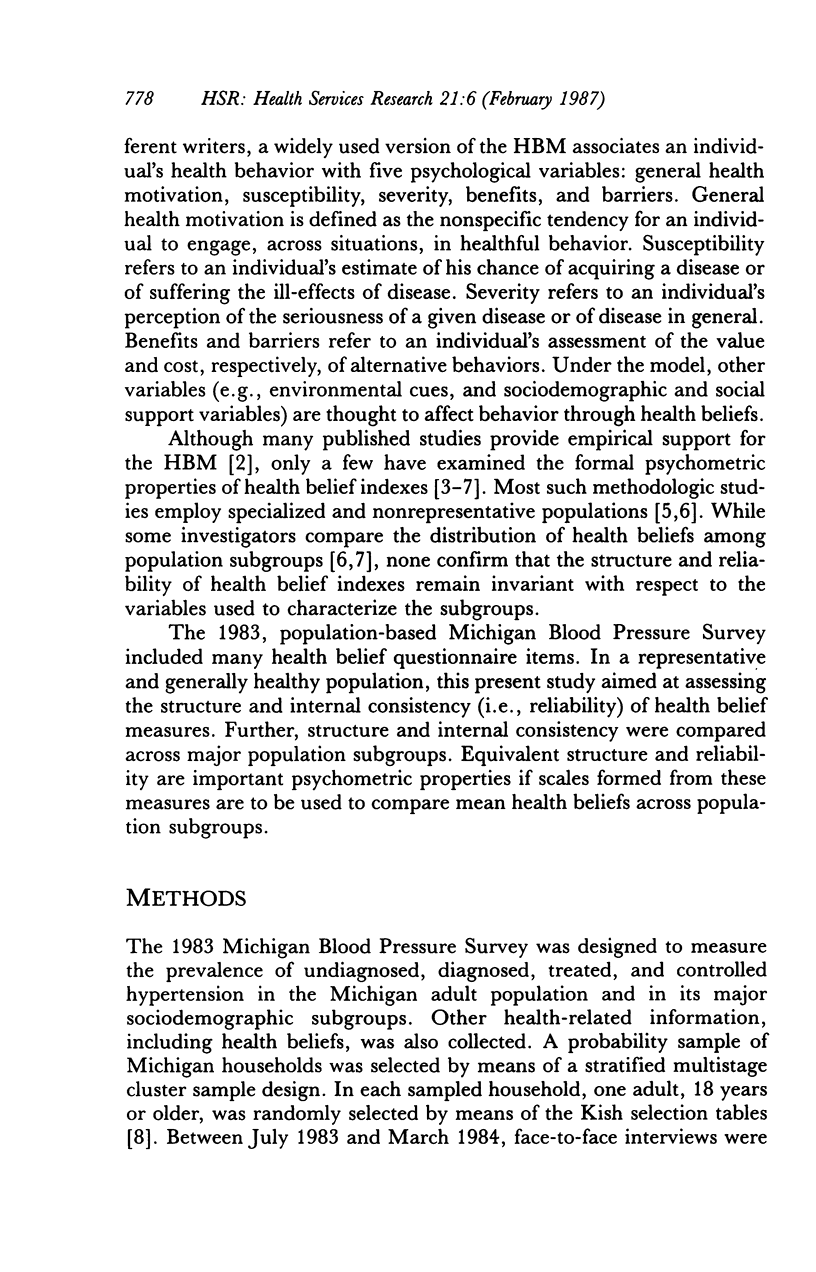
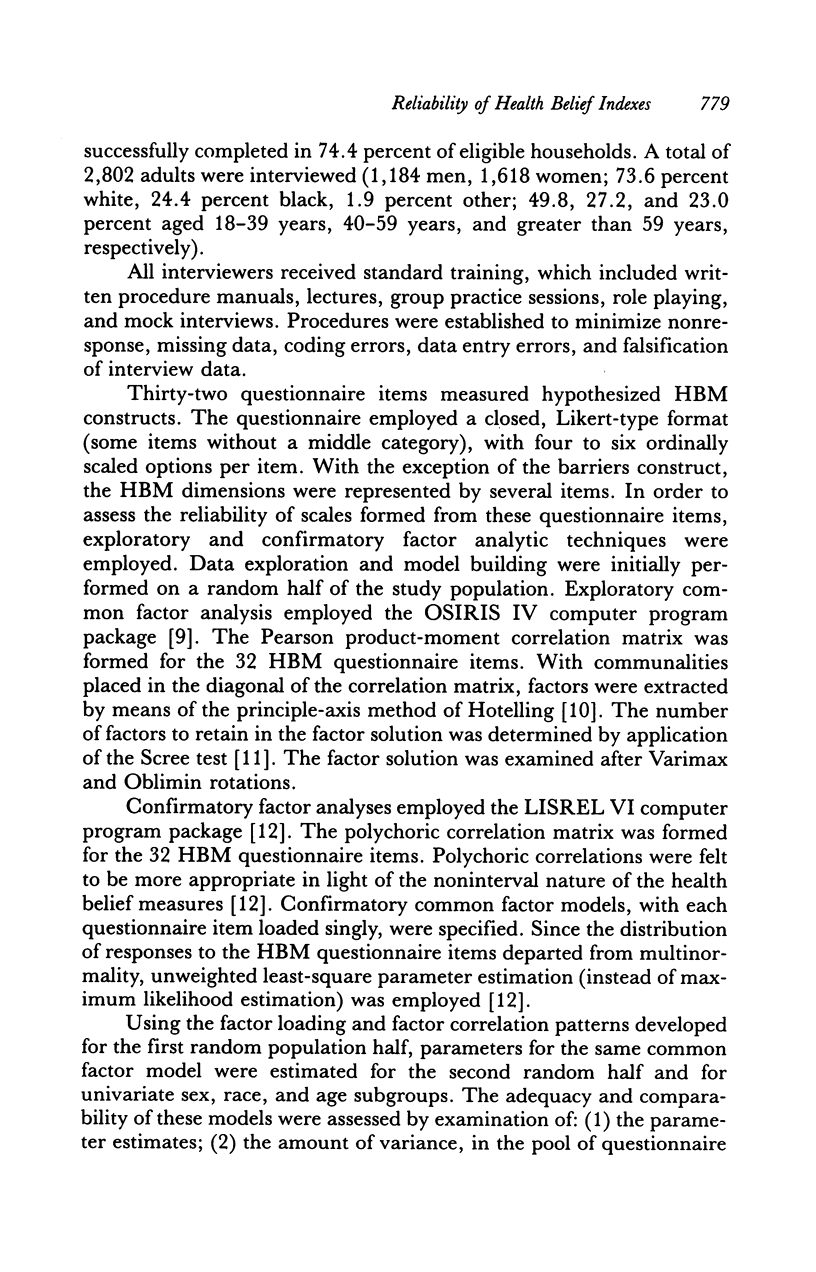

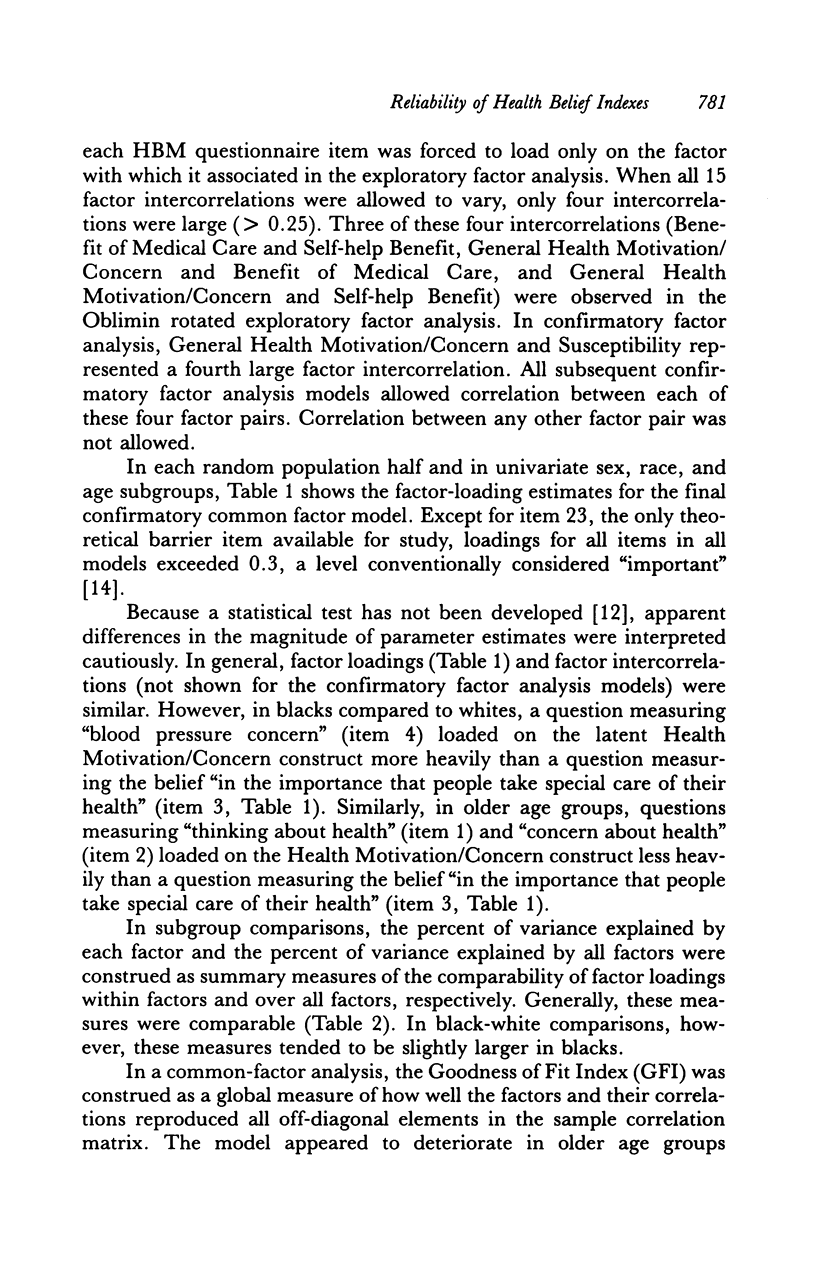

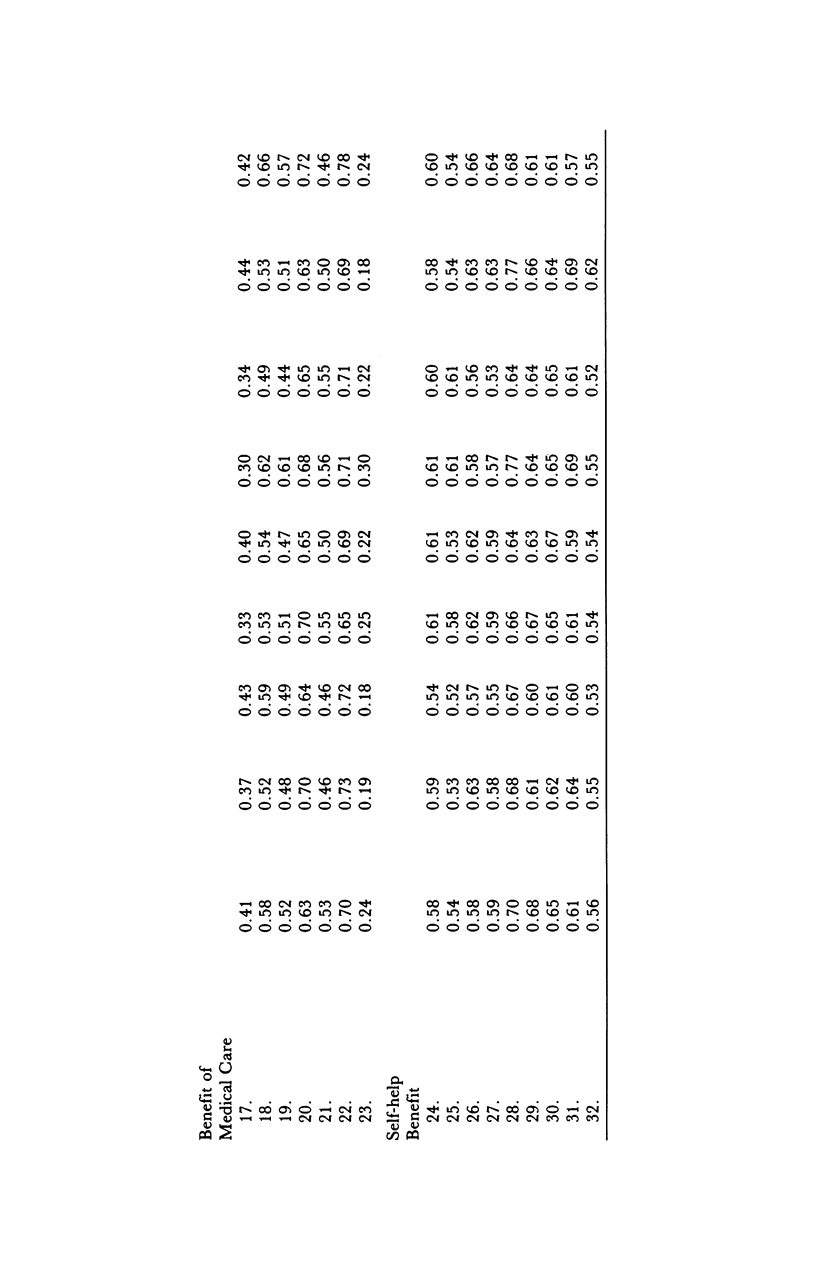
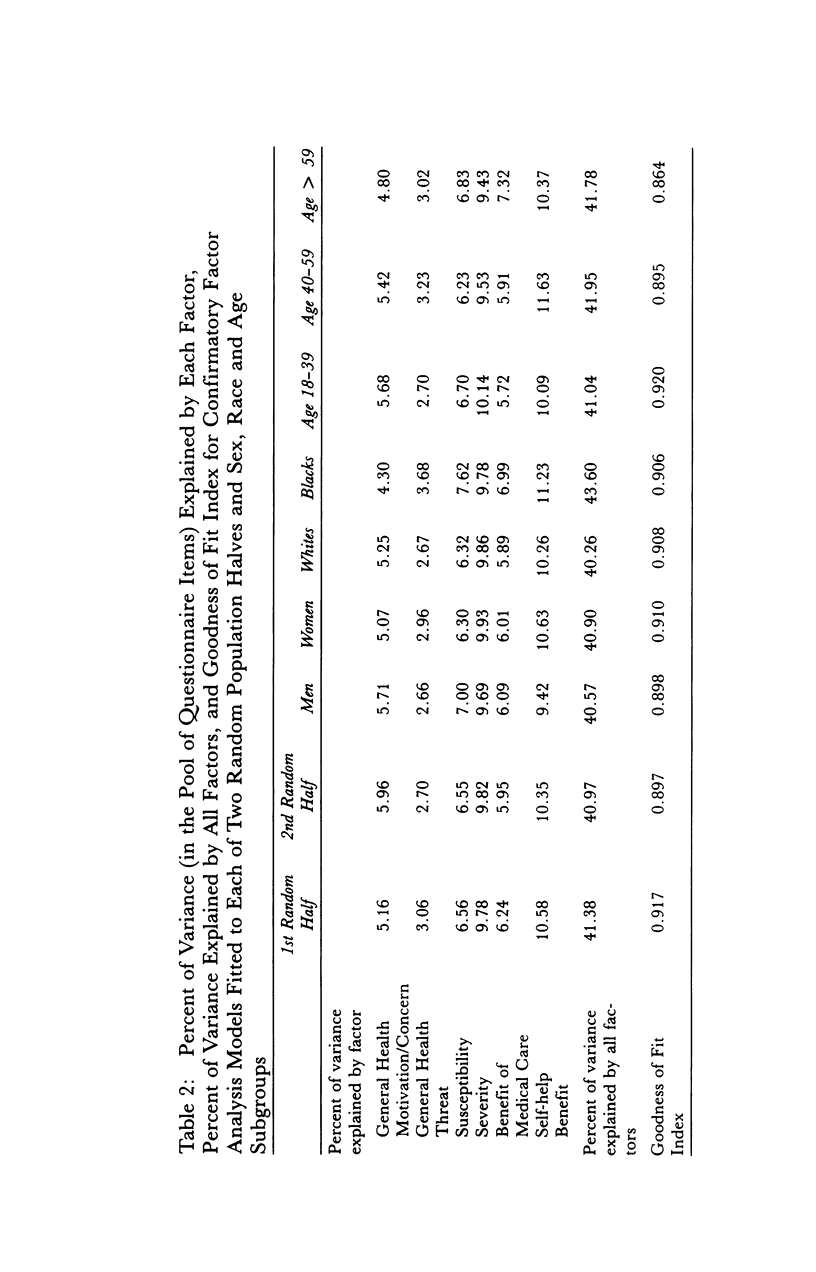
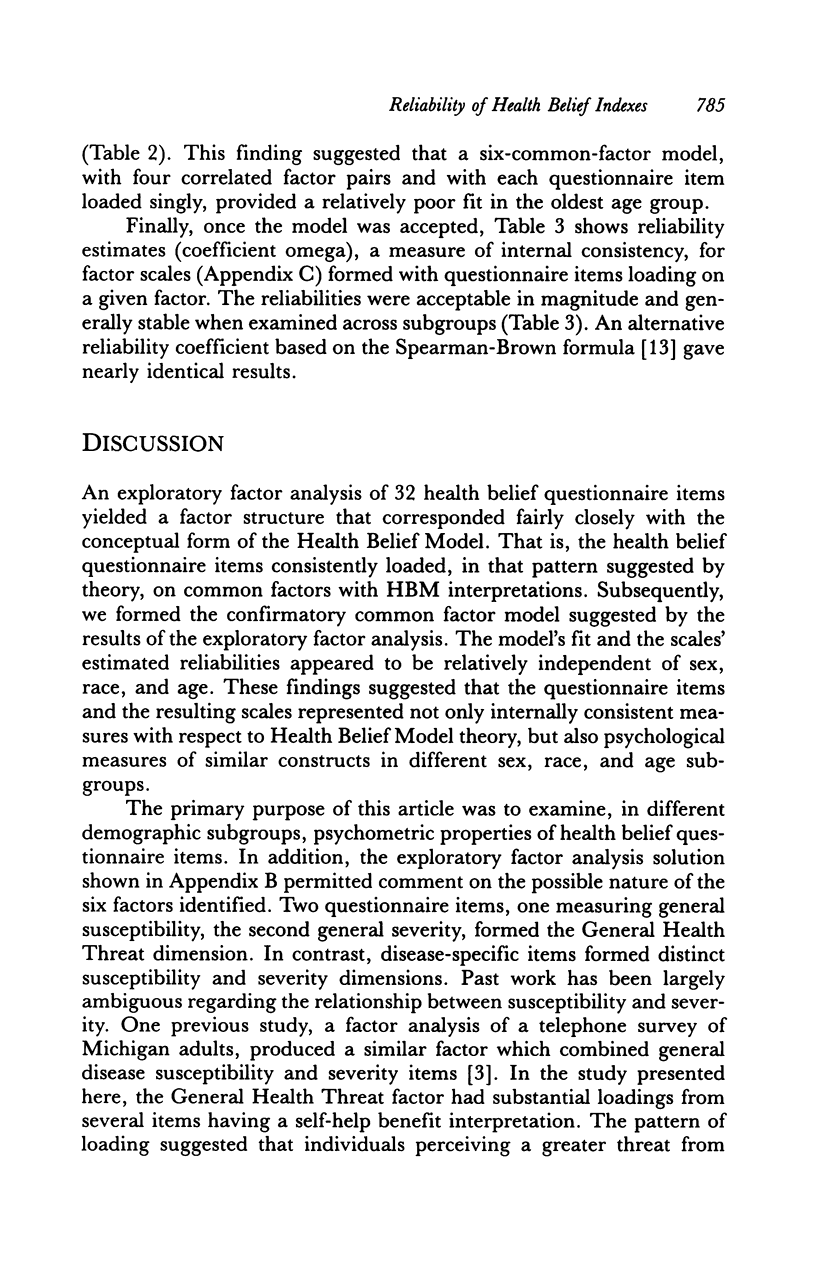
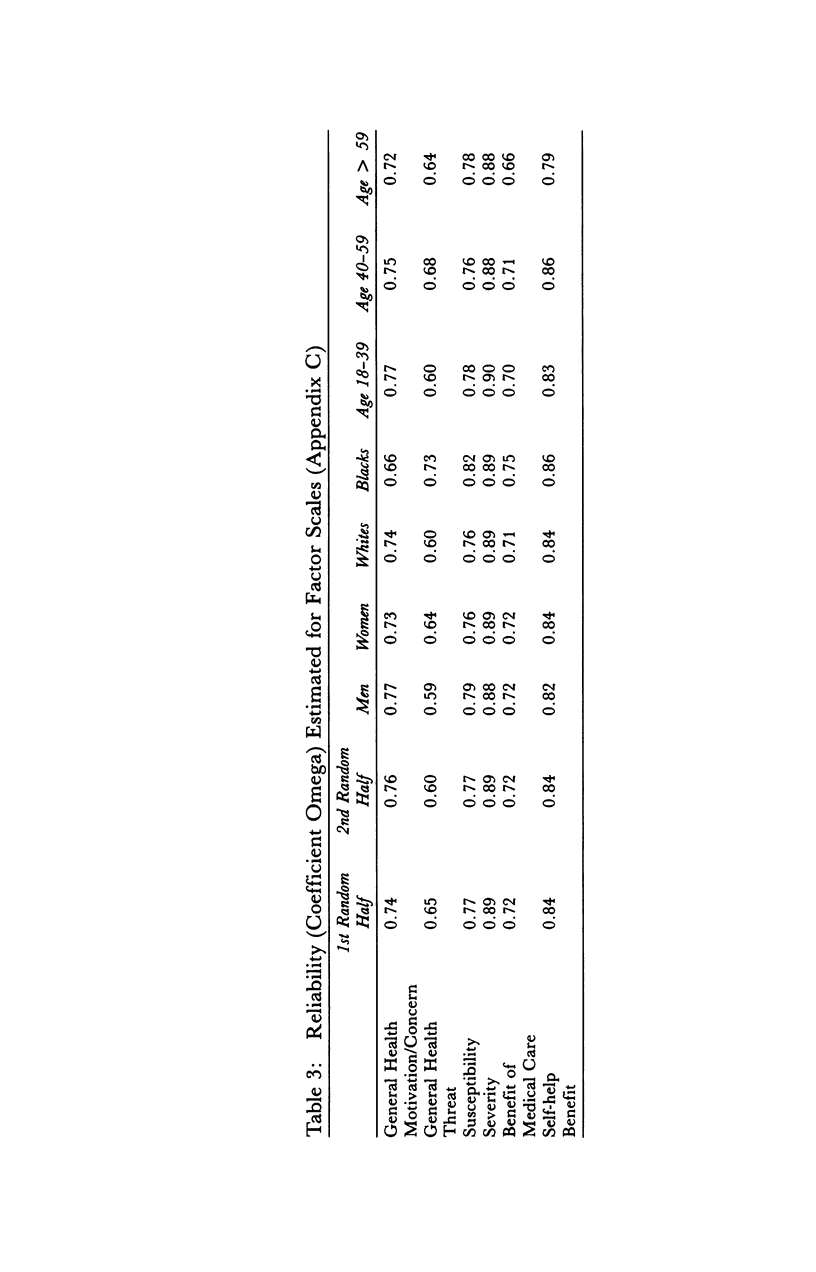
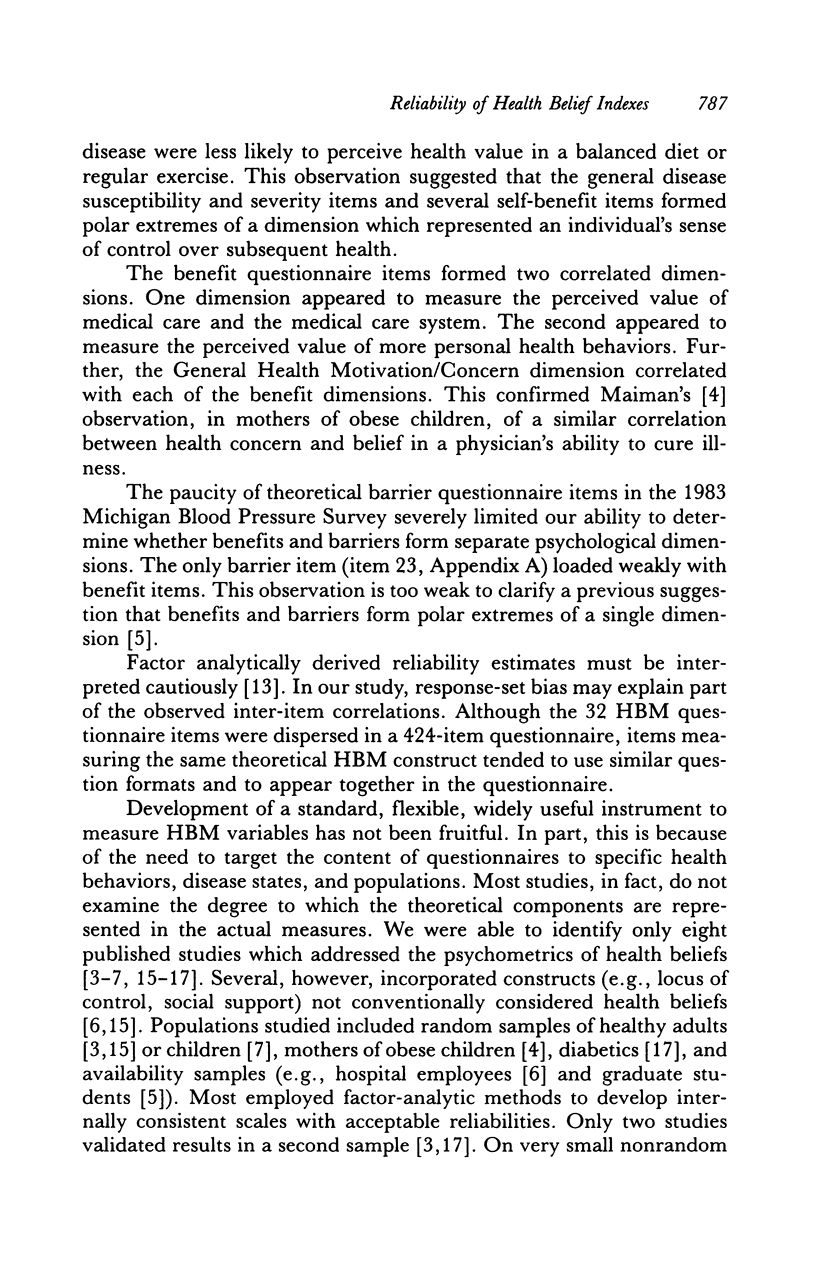
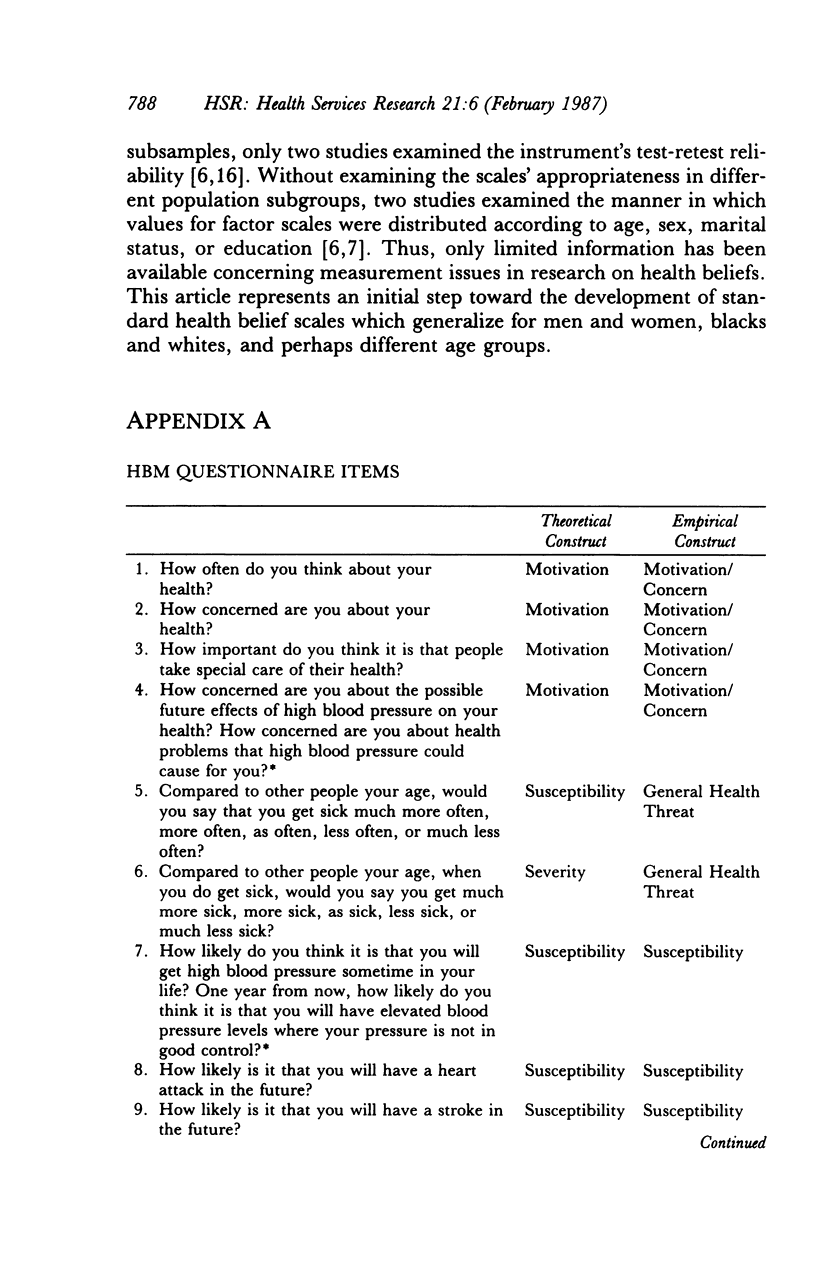
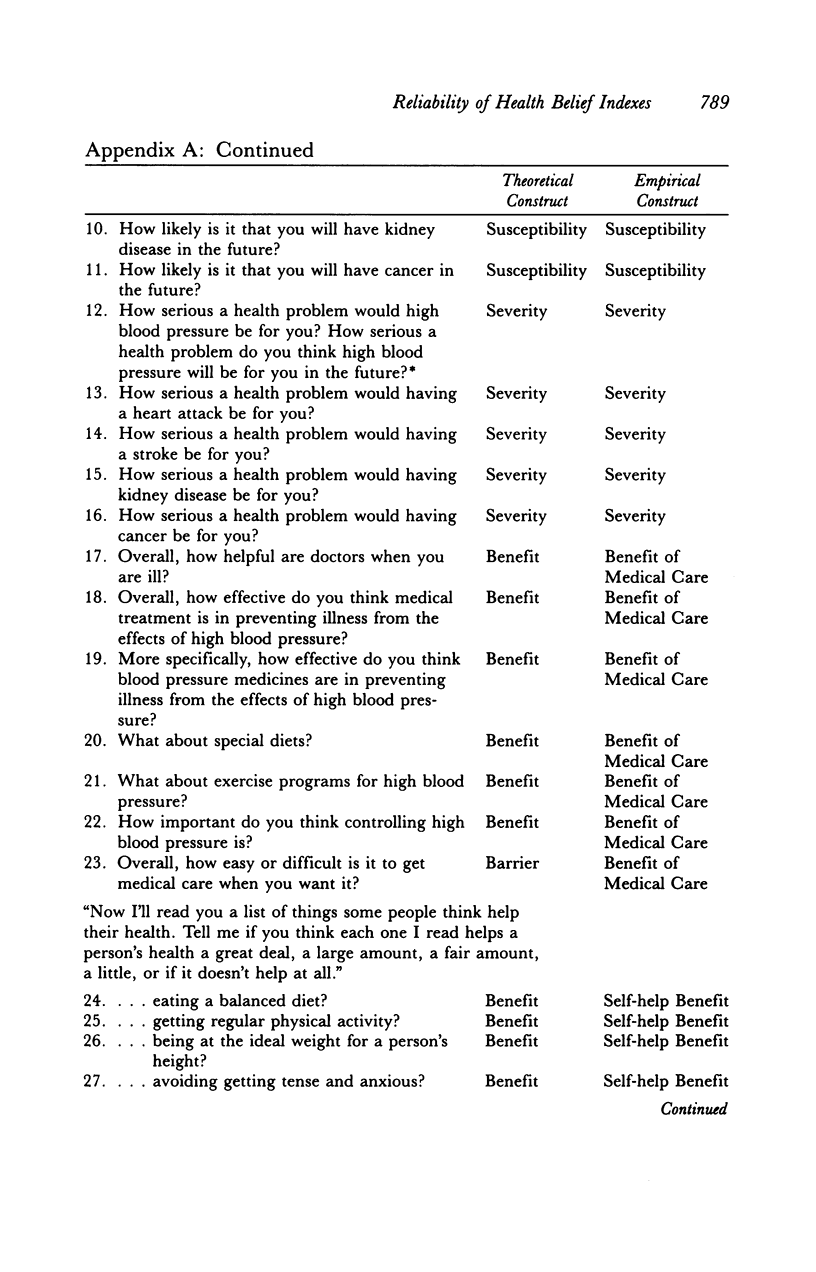


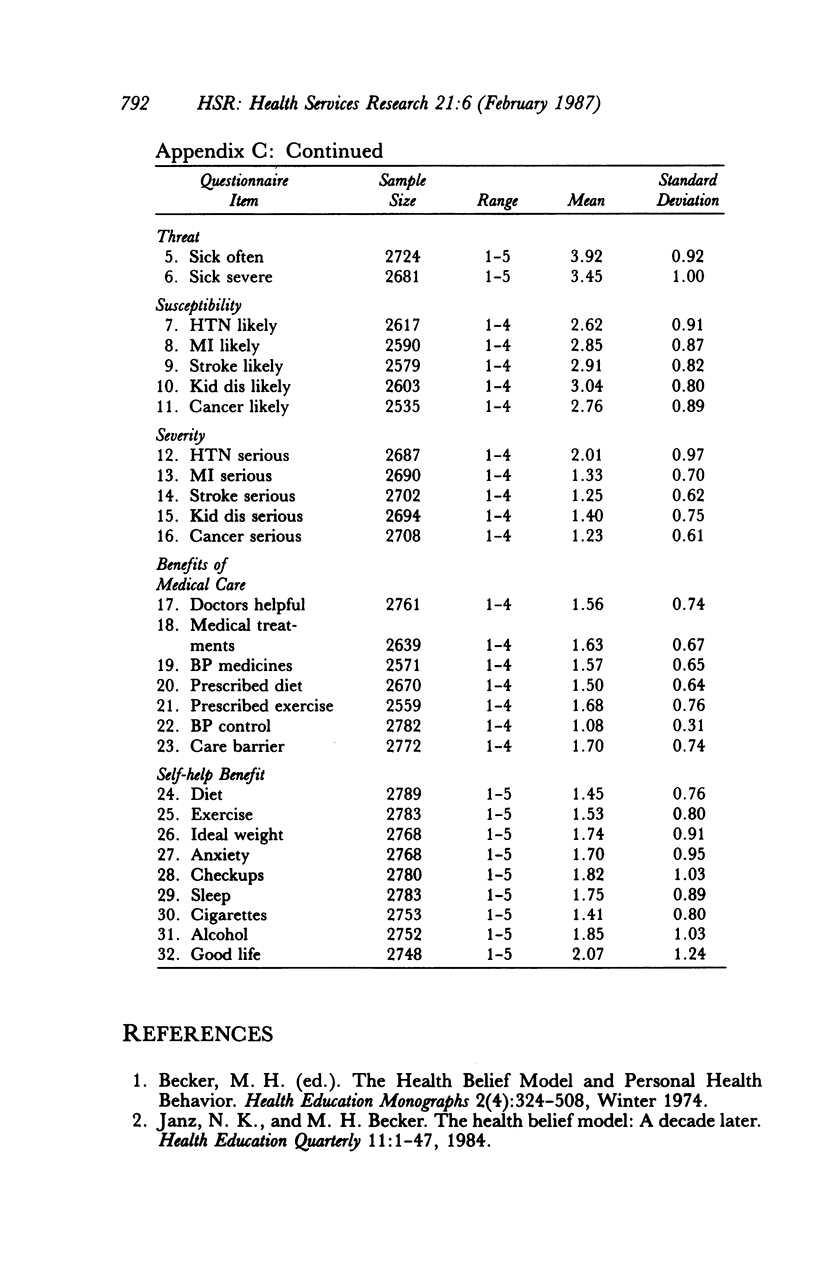
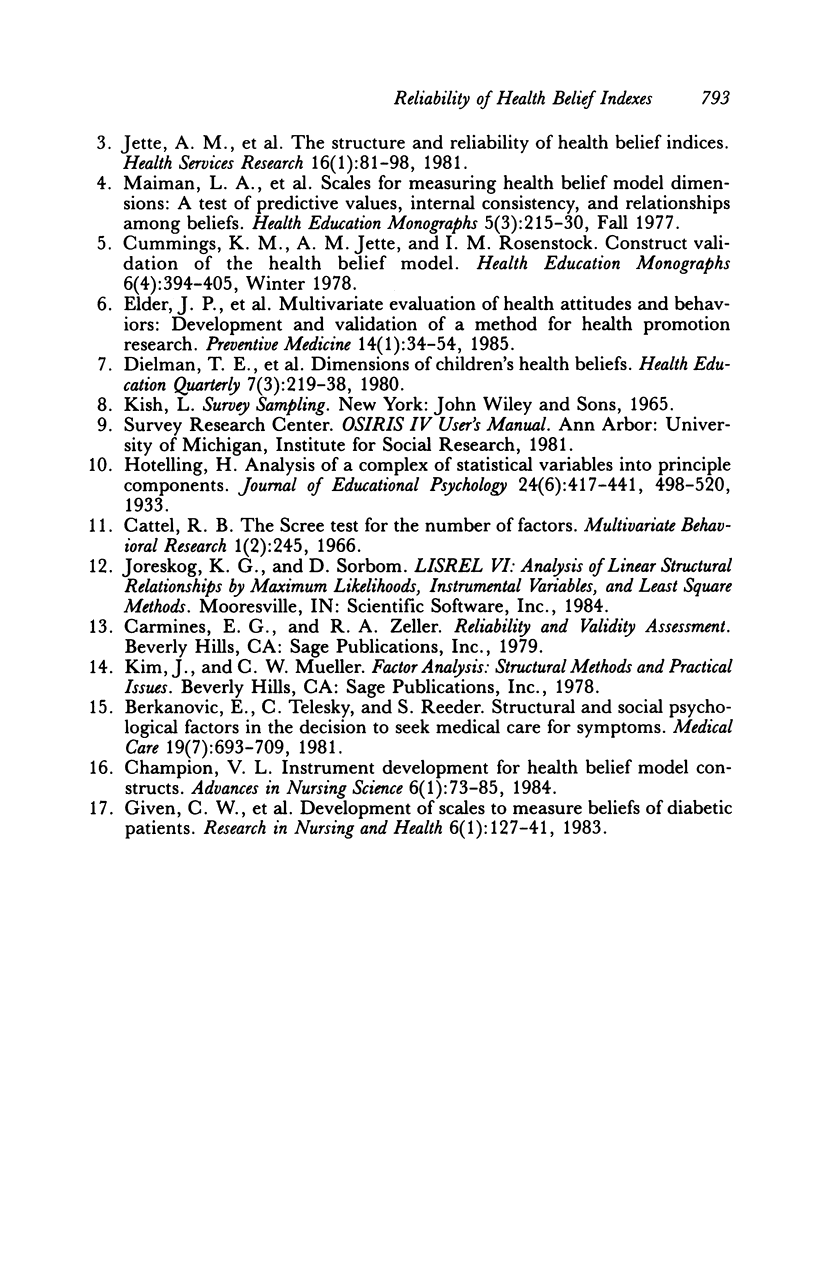
Selected References
These references are in PubMed. This may not be the complete list of references from this article.
- Berkanovic E., Telesky C., Reeder S. Structural and social psychological factors in the decision to seek medical care for symptoms. Med Care. 1981 Jul;19(7):693–709. doi: 10.1097/00005650-198107000-00001. [DOI] [PubMed] [Google Scholar]
- Champion V. L. Instrument development for health belief model constructs. ANS Adv Nurs Sci. 1984 Apr;6(3):73–85. doi: 10.1097/00012272-198404000-00011. [DOI] [PubMed] [Google Scholar]
- Cummings K. M., Jette A. M., Rosenstock I. M. Construct validation of the health belief model. Health Educ Monogr. 1978 Winter;6(4):394–405. doi: 10.1177/109019817800600406. [DOI] [PubMed] [Google Scholar]
- Dielman T. E., Leech S. L., Becker M. H., Rosenstock I. M., Horvath W. J., Radius S. M. Dimensions of children's health beliefs. Health Educ Q. 1980 Fall;7(3):219–238. doi: 10.1177/109019818000700304. [DOI] [PubMed] [Google Scholar]
- Elder J. P., Artz L. M., Beaudin P., Carleton R. A., Lasater T. M., Peterson G., Rodrigues A., Guadagnoli E., Velicer W. F. Multivariate evaluation of health attitudes and behaviors: development and validation of a method for health promotion research. Prev Med. 1985 Jan;14(1):34–54. doi: 10.1016/0091-7435(85)90019-2. [DOI] [PubMed] [Google Scholar]
- Given G. W., Given B. A., Gallin R. S., Condon J. W. Development of scales to measure beliefs of diabetic patients. Res Nurs Health. 1983 Sep;6(3):127–141. doi: 10.1002/nur.4770060306. [DOI] [PubMed] [Google Scholar]
- Janz N. K., Becker M. H. The Health Belief Model: a decade later. Health Educ Q. 1984 Spring;11(1):1–47. doi: 10.1177/109019818401100101. [DOI] [PubMed] [Google Scholar]
- Jette A. M., Cummings K. M., Brock B. M., Phelps M. C., Naessens J. The structure and reliability of health belief indices. Health Serv Res. 1981 Spring;16(1):81–98. [PMC free article] [PubMed] [Google Scholar]
- Maiman L. A., Becker M. H., Kirscht J. P., Haefner D. P., Drachman R. H. Scales for measuring health belief model dimensions: a test of predictive value, internal consistency, and relationships among beliefs. Health Educ Monogr. 1977 Fall;5(3):215–230. doi: 10.1177/109019817700500303. [DOI] [PubMed] [Google Scholar]


